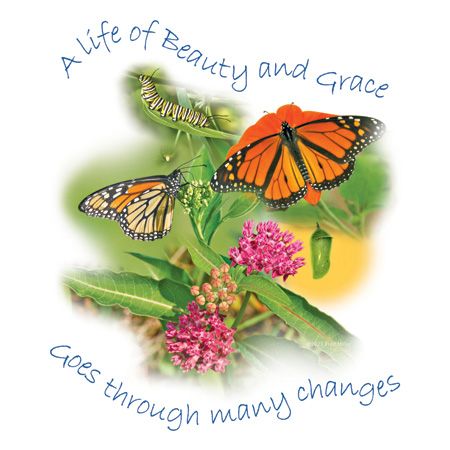Have you ever wondered how butterflies, with their remarkable attributes, can inspire your writing? Just as a butterfly evolves from a caterpillar into a colorful monarch, your writing can flourish with the right method. By examining the life cycle of a butterfly, we can uncover valuable insights to improve our writing style. This article will show you a way to use the transformation of nature to improve your writing skills.

Key Stages of Butterfly Development
To improve your science writing, it is helpful to understand the key stages of butterfly development. Just as butterflies go through different phases—egg, larva, pupa, and adult—your writing should progress through the stages of research, writing, revision, and completion. Each phase plays a crucial role in the creation of a sophisticated, spectacular work. For those seeking additional support, science essay writing services like EssayShark can offer valuable assistance in refining each stage of your science essay. You can achieve clarity and coherence in your scientific essays by aligning your writing process with these natural stages.
Chrysalis Phase and Writing Stages
The chrysalis segment of a butterfly’s life represents a vital length of transformation, similar to the level of research in writing. During this time, the butterfly undergoes enormous changes inside its chrysalis. Similarly, when researching your paper, refining your ideas and structure is important. This stage allows for deep, transformative creation where preliminary designs are carefully reviewed and moved forward. Just as a butterfly appears finer, your paper must become brighter and more polished by revision. Take this part as an opportunity to improve your ideas and make sure they meet the excessive requirements expected in science writing.
Butterfly Adaptability in Writing
Butterflies are excellent for adaptability, thriving in different environments by developing precise strategies. This adaptability can inspire your writing technique. In emulating the flexibility of the butterfly, you must be open to modifying your writing style to suit different topics or audiences. Adaptability in writing involves adapting your language, form, and presentation to effectively communicate your studies. For example, if you need to meet certain needs or face creator’s block, remember to seek help. If you’re thinking, “I need someone to write my paper,” turning to professional services can provide new perspectives and techniques to beautify your writing, just as butterflies adapt to thrive.
Observation for Precise Writing
Observing butterflies in their plant habitats can teach us the value of attention to details. In writing, careful reference to your study materials, records, and existing literature is vital for accuracy. Just as you will observe the styles and behaviors of a butterfly to understand its species, you should analyze your sources to ensure accuracy and relevance to your writing. This careful commentary allows you to provide well-grounded arguments and avoid mistakes. By applying the same stage of review to your writing technique, you can create a more accurate and credible paper.
Applying Butterfly Cycles to Revisions
The butterfly’s existence cycle mirrors the manner of revising a scientific paper. Each stage of the butterfly’s is necessary for its transformation, simply as each revision level is crucial for refining your paper. Begin with wide structural adjustments (like a butterfly’s early ranges), then move to unique edits (akin to the pupa phase). Finally, ensure that your final draft is polished and coherent, similar to the fully evolved butterfly. By aligning your revision manner with these stages, you may systematically enhance your paper, ensuring readability and precision in your final submission.
Evolving Your Writing Skills Mimics Butterfly Phases
Just as butterflies evolve via awesome existence levels, your writing talents must also progress over time. Start by getting to know primary writing techniques and step-by-step enhance to more complicated structures and styles. Each degree of your writing improvement mirrors the butterfly’s growth phases. Embrace opportunities for feedback and persistent studying, as those will help you refine your skills similarly. By constantly challenging yourself and adapting to new writing techniques, you could enhance your capacity to communicate effectively and bring exceptional scientific papers.
Crafting Conclusions Like Butterfly Emergence
The emergence of a butterfly from its chrysalis symbolizes a transformative end. In writing, your end serves as the final reveal, summarizing and synthesizing your findings. Just as the butterfly’s emergence is the result of its development, your conclusion must encapsulate the important thing insights and implications of your studies. Aim to leave a long-lasting impression on your readers by truly articulating the importance of your ideas. A nicely crafted end ties together your arguments and gives a considerate reflected image, much like the very last, breathtaking emergence of a butterfly.
Bottom Line
By covering the life cycle of a butterfly, you can make a difference in your science writing. Each stage—research, writing, and revising—corresponds to the butterfly’s developmental phases, offering a road map for clarity and precision. Just as a butterfly becomes more vibrant, so can your writing be enriched by these ideas and techniques.




